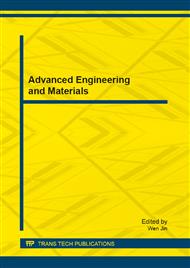p.338
p.343
p.347
p.355
p.359
p.365
p.371
p.377
p.384
Experimental Study on Bond-Slip Constitutive Relation between CFL and Concrete
Abstract:
Externally bonded reinforcing technique with fiber reinforced polymer (FRP) has been widely used in civil engineering. The performance of the interface between FRP and concrete is one of the key factors affecting the behavior of the strengthened structures. This paper presents a detailed study on the bond-slip mechanism between carbon fiber laminate (CFL) and concrete based on double-shear tests. 8 specimens with different bonded length and width of CFL were tested under static loading. Strain gauges along the CFL face and displacement sensor were used to measure longitudinal strains and slip of the interface. The bond-slip constitutive relation of the interface between CFL and concrete was analyzed with the testing results. Compared with four different bond-slip models, a shear stress-slip model was proposed based on the experimental data.
Info:
Periodical:
Pages:
359-364
Citation:
Online since:
February 2013
Authors:
Price:
Сopyright:
© 2013 Trans Tech Publications Ltd. All Rights Reserved
Share:
Citation:


